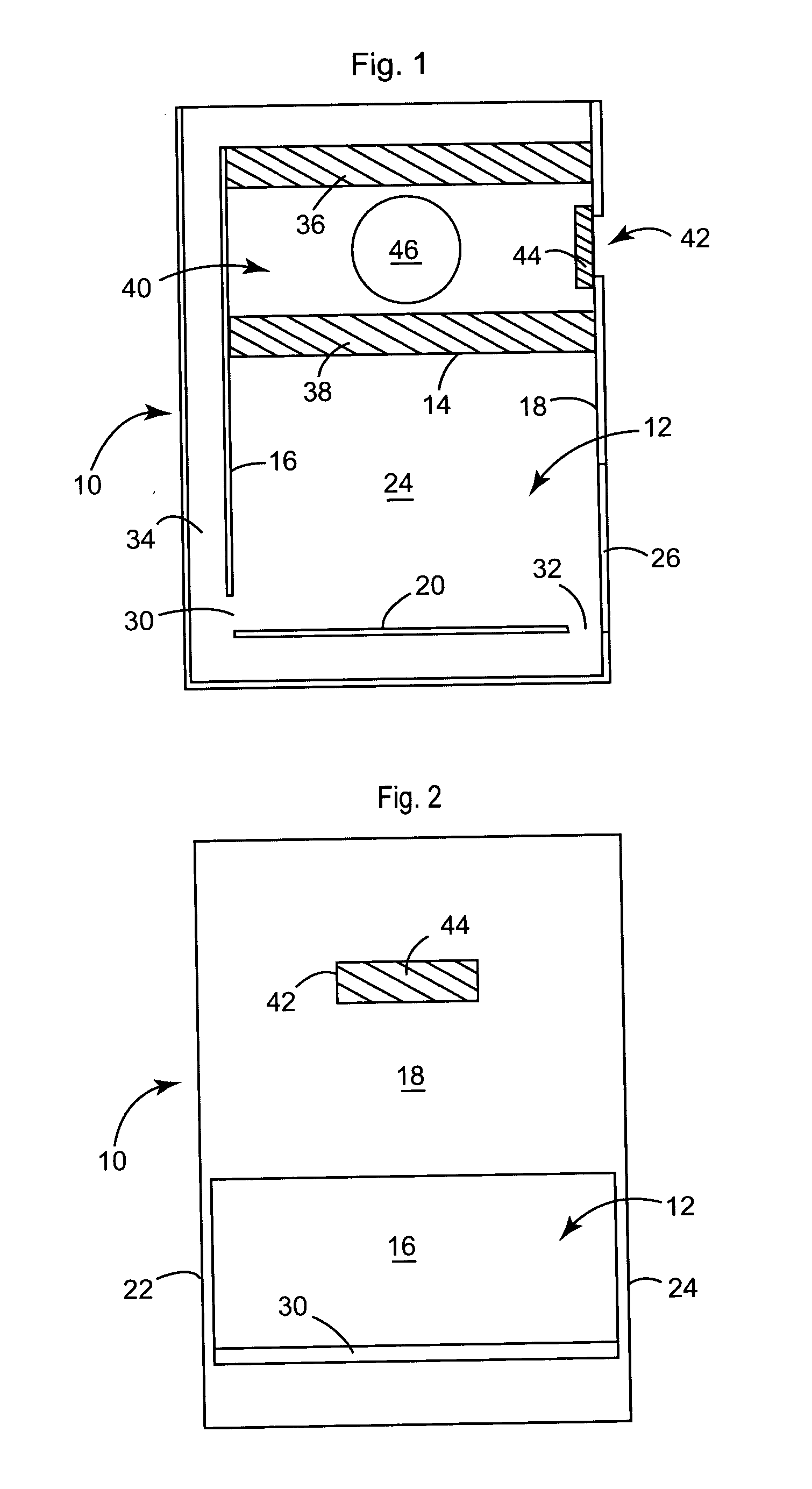Biological safety cabinet
a biochemical and safety cabinet technology, applied in the field of laboratory safety enclosures, can solve the problems and achieve the effect of increasing the difficulty and time required for fan repair or replacemen
- Summary
- Abstract
- Description
- Claims
- Application Information
AI Technical Summary
Benefits of technology
Problems solved by technology
Method used
Image
Examples
Embodiment Construction
[0018] As illustrated in FIGS. 1 and 2, cabinet, generally 10, is comprised of a chamber 12 defined by top wall 14, back wall 16, front wall 18, bottom wall 20 and side walls 22 and 24. Front wall 18 includes an access opening 26 through which material can be inserted into and removed from chamber 12. Opening 26 also serves as a makeup air inlet. Discharge openings 30 and 32 are located at the lower edge of back wall 16 and the front edge of bottom wall 20, respectively.
[0019] Air conduit 34 extends beneath bottom wall 20, behind back wall 16 and is spaced above top wall 14. Conduit 34 includes a discharge opening covered by a first HEPA filter 36, which is horizontally oriented in the preferred embodiment. A second HEPA filter 38 extends across top wall 14. Filter 38 is spaced beneath filter 36, with the filters being parallel to each other in the preferred embodiment. Filters 36 and 38, and the upper sections of walls 16, 18, 22 and 24 define a fan enclosure 40 positioned above c...
PUM
| Property | Measurement | Unit |
|---|---|---|
| Pressure | aaaaa | aaaaa |
Abstract
Description
Claims
Application Information
 Login to View More
Login to View More - R&D
- Intellectual Property
- Life Sciences
- Materials
- Tech Scout
- Unparalleled Data Quality
- Higher Quality Content
- 60% Fewer Hallucinations
Browse by: Latest US Patents, China's latest patents, Technical Efficacy Thesaurus, Application Domain, Technology Topic, Popular Technical Reports.
© 2025 PatSnap. All rights reserved.Legal|Privacy policy|Modern Slavery Act Transparency Statement|Sitemap|About US| Contact US: help@patsnap.com


